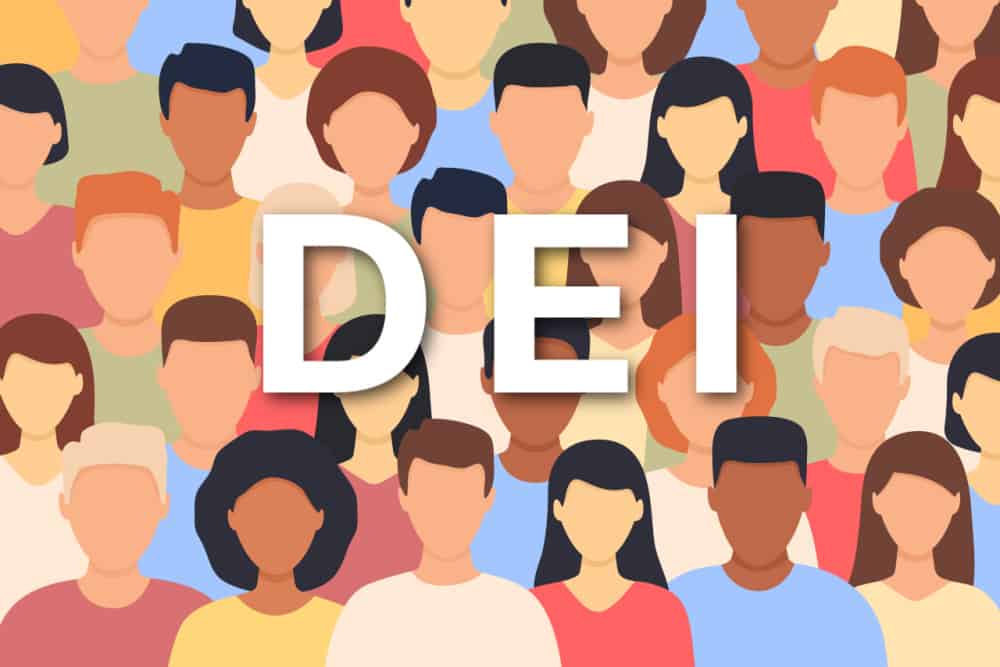DEI began as a tool used by Lenin and Stalin
The Soviet Union under Vladimir Lenin and Joseph Stalin implemented the korenizatsiya programme. The programme was later repackaged in the West as “social justice” and diversity, equity, and inclusion (“DEI”). It has also been used to fue

The Soviet Union under Vladimir Lenin and Joseph Stalin implemented the korenizatsiya programme. The programme was later repackaged in the West as “social justice” and diversity, equity, and inclusion (“DEI”). It has also been used to fuel decolonisation movements and radical indigenous movements worldwide.
Whether it is called korenizatsiya, social justice or DEI, the aim was and is to break down existing regimes by exploiting ethnic and racial divisions. The ultimate goal was and is to undermine individual liberties and freedom and to consolidate power in the hands of Communist handlers and sympathisers.
Regardless of where it is implemented, the results of korenizatsiya are consistently the same: ethnic strife, a two-tiered system that favours radicals, degradation of minority communities, eventual backlash by the majority population and escalating ethnic conflict, ultimately leading to civilisational breakdown and catastrophe.
Let’s not lose touch…Your Government and Big Tech are actively trying to censor the information reported by The Exposé to serve their own needs. Subscribe now to make sure you receive the latest uncensored news in your inbox…
Yesterday, James Lindsay published an essay about Stalin’s Soviet DEI programme. Stalin’s programme was called korenizatsiya. The programme set the stage for millions of Ukrainians to be starved to death in the Holodomor.
Korenizatsiya was reversed in the USSR in the late 1920s but instead of it being abandoned, it was exported – ultimately worldwide.
The Communist Roots of the Narrative
Lindsay begins his essay by describing the narrative of a sociopolitical movement that divides the population into two classes: the oppressive “great power” class and the marginalised minority classes, with the movement claiming to support the minority classes against oppression and promoting self-determination.
This narrative tells the minority classes that they are more communal and social than the “great power” and that the movement recognises and values their agency and autonomy, offering to help them resist the “great power’s chauvinism” and raise up leaders among them to fight for their rights.
You might be thinking that the narrative bears a resemblance to the rationale behind current DEI regimes and Critical Race Theory (“CRT”), which also identify a “great power” of oppression, such as “white supremacy culture” or “patriarchy,” and promote resistance through DEI initiatives and the selection of leaders from marginalised groups.
However, this narrative is more or less the one told by Communists Vladimir Lenin and Joseph Stalin to ethnic minorities in the former Russian Federation in the 1920s, where the “Great Russian” was seen as imposing “Great Russian chauvinism” on minority groups and the Communists offered to help these groups resist and promote their identities and values.
The Communists promised the minority groups in the Soviet Union self-determination, cultural preservation and representation in the Party Congress on one condition: they must adhere to socialist principles.
Both the Communist approach and the current DEI regime use a similar narrative to promote their ideologies and recruit allies. This narrative is based on the idea of resisting oppression and promoting the values and interests of marginalised groups, but with the ultimate goal of advancing a particular ideological agenda.
Korenizatsiya: A Soviet DEI Programme
The Soviet Union, under the leadership of Lenin and Stalin, implemented a programme called korenizatsiya, which translates to “the process of putting down roots” and was essentially what we would call today a DEI programme.
The programme, which began in 1921 and was more fully implemented in 1923, allowed for self-determination in ethnic minority regions as long as it did not contradict the Communist Party goals and elevated ethnic minority leaders who aligned with the Party line to positions of power.
The purpose of korenizatsiya was to promote a high Soviet Communist ideal, known as fakticheskoye ravenstvo, which aimed to achieve “actual equality,” or what we call “equity” today, across economic, social, political and cultural domains. It was the Soviet Union’s “Inclusion” programme that history has recognised as being the world’s first “Affirmative Action Empire.” In practice, it created immense ethnic strife and gave a great advantage to the Communists, particularly the most diabolical and Machiavellian among them.
Embedded within korenizatsiya was another concept called raznoobraziya, which translates to “diversity.” This was favoured and promoted by Lenin, who understood it as “unity in content through diversity in form,” meaning that people would look different (diversity in form) but all think the same – as Communists (unity in content).
Korenizatsiya was a dismal failure. Whether deliberately a failure or not, it set the stage and was used as Stalin’s justification to enact a “unity in form” programme in the 1930s where everyone must be a Russian Communist. This led to millions of Ukrainians being brutally and intentionally starved to death in the Holodomor merely because of their potential to resist the programme.
The Soviet Union’s experiment with korenizatsiya and raznoobraziya ultimately ended in disaster, with the programme being used to justify brutal suppression and uniformity rather than achieving true equality and diversity. It serves as a warning about the dangers of similar programmes in the present day.
The Export of Korenizatsiya
Despite being reversed in the Soviet Union at the end of the 1920s, korenizatsiya was not abandoned. Instead, it was recognised as a powerful tool – an evil means to a totalitarian end – and exported.
It was exported to China, where it was adopted by Mao Zedong and the Chinese Communist Party (“CCP”) to deal with the country’s ethnic minorities. Mao brought korenizatsiya in because, as it is intended to work, it broke down an existing regime and installed and consolidated Communist power over a diverse population.
The policy was also exported to the United States in the 1920s by Soviet infiltrators and the Communist Party USA. The goal was to turn the South into a socialist “Black” nation that would agitate against the United States on racial lines. This effort was ultimately foiled by the Great Depression and the migration of Southern black people to the North.
In the 1960s, Herbert Marcuse, a philosopher, recognised the potential of korenizatsiya in the United States. He saw the “ghetto populations” as having the necessary “vital energy” for revolution but lacking the theory and social location to bring about change. He used korenizatsiya as a tool to leverage various “ghetto populations” to create a breakthrough against the capitalist West.
Marcuse’s vision ultimately led to the development of the “liberating tolerance” regime of DEI, CRT and other related ideologies, which have had a profound impact on modern society.
However, it wasn’t until 1989, with the emergence of CRT, that korenizatsiya had a significant impact on the United States, building on the foundations laid by earlier movements such as Black Power, Black Nationalism and the Black Panthers in Marcuse’s day.
Korenizatsiya and Decolonisation Movements
Korenizatsiya has also been used as a basis for radical decolonisation movements throughout the world, also referred to as “Third Worldism” or “postcolonialism.” It set the stage for the radical indigenous movements that have torn apart nations such as South Africa, Australia, Canada and New Zealand, as well as US states like Alaska, New Mexico and Hawaii.
Regardless of where it is implemented, the results of korenizatsiya are consistently the same: ethnic strife, a two-tiered system that favours radicals, degradation of minority communities, eventual backlash by the majority population and escalating ethnic conflict, ultimately leading to civilisational breakdown and catastrophe.
“All eyes on South Africa, the leading modern korenizatsiya experiment, for a look a few more years down that road,” Lindsay said.
The Choice Facing the West
The ultimate goal of korenizatsiya is not to promote genuine diversity or equality but rather to consolidate power in the hands of a few people who promote anti-Western and Communist visions of control and conquest, using “diversity in form” as a superficial pretext to achieve “unity in content.”
“What we’ve taken in over the last few decades and established in our countries’ institutional structures and national psyches is not an enlightened movement of empathy and tolerance that advances civil rights and equal opportunity,” Lindsay said. “It’s a Soviet program of destruction and power consolidation called korenizatsiya that is a parasite on the noble ethics of civil rights and equal opportunity. That is, it’s a diabolical counterfeit that offers us only our own destruction while handing our society over to grifters and their Communist handlers.”
The choices facing Western societies are stark. We can continue down the path of destruction and fall prey to the identity-driven backlash that korenizatsiya is designed to produce, throwing away our peace and freedoms. Or we can reject korenizatsiya and assert the importance of individual liberties and freedom, recognising “social justice” to be nothing more than a pretext for tyranny.
“That choice is ours. There’s only one right answer if we wish to remain free and prosperous,” Lindsay concluded.
You can read James Lindsay’s full essay HERE.
About James Lindsay
James Lindsay is an American author and mathematician. He has written six books spanning a range of subjects including religion, the philosophy of science and postmodern theory. He is a leading expert on Critical Race Theory and founded the website New Discourses, a resource to examine the critical social justice ideology, also referred to as “woke” ideology.
The Expose Urgently Needs Your Help…
Can you please help power The Expose’s hosest, reliable, powerful and truthful journalism?
Your Government & Big Tech organisations
such as Google, Facebook, Twitter & PayPal
are trying to silence & shut down The Expose.
So we need your help to ensure
we can continue to bring you the
facts the mainstream refuse to…
We’re not funded by the Governmenrt
to publish lies and propagandas on their
behalf like the Mainstream Media.
Instead we rely solely on your support. So
please support us in ourt efforts to bring
you honest, relisble, investagative journslism
today. It’s secure, quick and easy…
Please just choose your preferred
method to show your support…
Read the full article at the original website
References:
- https://newdiscourses.com/2025/03/stalins-soviet-dei-program/
- https://newdiscourses.com/2022/02/workshop-1-what-is-critical-race-theory/
- https://newdiscourses.com/author/jameslindsay/
- https://newdiscourses.com/about/
- https://newdiscourses.com/2020/07/james-lindsay-joe-rogan-critical-social-justice/
- https://expose-news.com/2024/10/17/the-expose-october-fundraising-2024/
- https://expose-news.com/2024/04/05/april-fundraising-campaign-24/
- https://expose-news.com/2024/09/11/september-fundraising-campaign-we-rely-solely-on-the-support-of-our-suffering-readers/
- https://expose-news.com/asp-payment-box/?product_id=237456
- https://expose-news.com/asp-payment-box/?product_id=253886
- https://donate.stripe.com/4gw4iL2MOaLuaCAaEF
- https://www.buymeacoffee.com/dailyexpose
- https://gettr.com/user/dailyexposegb
- https://gab.com/dailyexpose
- https://expose-news.com/2025/03/25/more-than-200000-businesses-have-closed/
- https://expose-news.com/2025/03/25/europe-is-again-going-totalitarian/
- https://expose-news.com/2025/03/25/trumps-banning-of-cbdcs-is-a-moot-point-americans-already-live-under-a-cbdc-system/
- https://expose-news.com/2025/03/25/give-ireland-back-to-the-irish/
- https://t.me/dailyexpose
